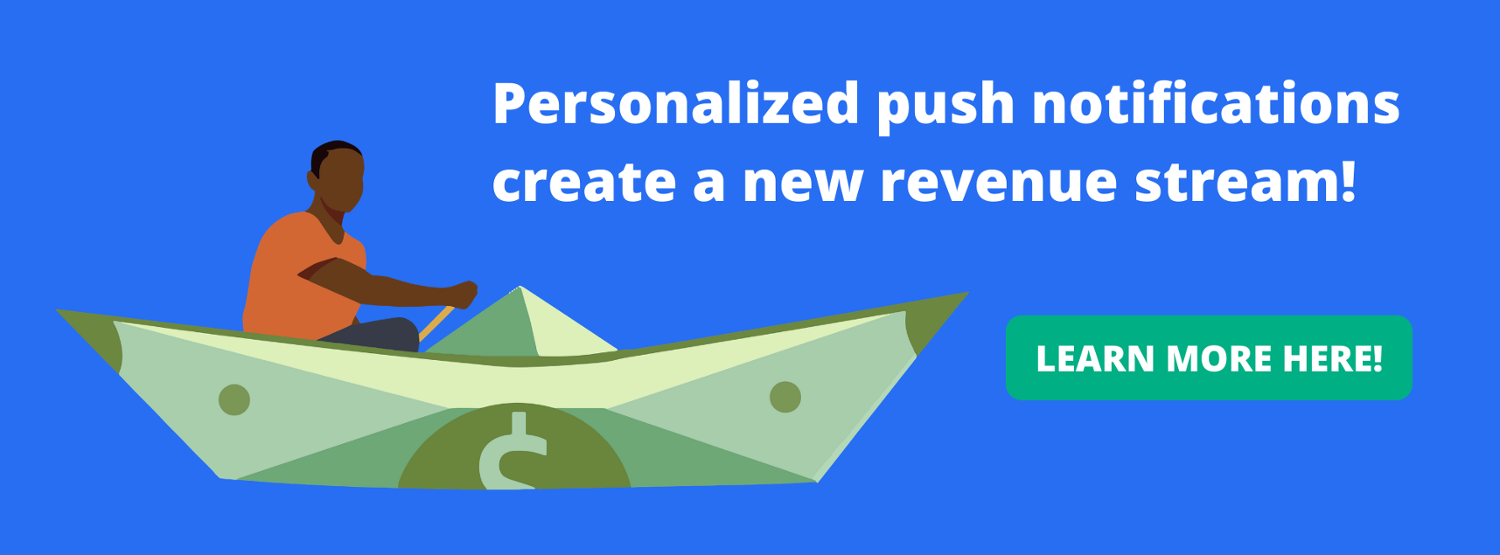In this article, we’ll be addressing a big problem facing publishers today…
TL;DR — check out this video!
People are consuming content online now more than ever. According to a 2020 report from Global Web Index, 87% of US consumers and 80% of UK consumers say they’re consuming more content since the coronavirus outbreak began. And this growth in digital media engagement is expected to last even after the pandemic is over.
I know what you’re thinking — this doesn’t sound like a “big problem” (more like a big blessing).
And while that’s true, it’s also forcing publishers to realize something important. They need to successfully engage their audiences so they won’t look for content elsewhere. And with the amount of content out there now, that is more easily said than done.
The good news is that there is a solution. Publishers can distribute millions of personalized notifications tailored specifically to audience interests and behaviors — at the right time and on the right channel. As a result, they’ll be able to build trust, increase engagement, and drive revenue.
The question is: Do you have the right strategies and tools to make it happen? And what is the best way to do it?
To break it down, here are four options for delivering personalized content to your audiences at scale.
1. Post on social networks
Publishers can use social networks like Facebook, Twitter, and Instagram to reach millions of people for free. Still, there’s a glaring issue on these channels: you lose control of your distribution pipeline because algorithms dictate who sees your content and when.
So even if you have 100,000 followers and use a hashtag that’s tracked by 200,000 users, you may only reach a portion of those people at the right time — or at all.
This isn’t news, of course. Organic reach on social media has been an obstacle for years now, forcing publishers to shell out big money on ads just for a chance to tap into a saturated market.
Since social media channels like Facebook no longer need publishers to grow, they’re changing algorithms to favor user-generated and user-shared content. Meaning, publishers are at a major disadvantage on their quest to distribute personalized content and messaging at scale and re-engage their audiences.
2. Integrate with different DMPs
If you’ve become frustrated with social media, you can always try to configure a distribution strategy yourself by integrating different data management platforms (DMPs). With this option, you can aggregate user data in a central location and add in layers of data from third-party sources outside of your regular database.
The challenge? It’s a complex process and cause for potential headaches. By working with DMPs, you have to enter data manually, stay on top of tracking changes, and update each configuration yourself. Since the process isn’t automated, it’s not only more time-consuming, but it’s also less accurate, since user data is constantly changing.
Not to mention the expenses; you could end up paying tens of thousands per month and you’ll still need a dedicated, trained team to undergo a lengthy integration process and maintain the system.
Sure, it can get you that scale you’ve been looking for, but you need to consider if it’s worth the effort and resource investment.
3. Build it yourself
Don’t want to scream into the social media void or integrate with other DMPs? You can build a DMP or distribution platform yourself. This will give you total control over your operation. But of course, it will require even more time, money, talent, and resources than the previous options.
On the one hand, if you have access to a network of developers or a bucket of seed money, this might be an attractive route to take. But if you’re building out your internal resources, prioritizing growth, or looking to automate processes, this approach might be too risky. Plus, it will basically turn your business into a technology company rather than a publisher.
4. Work with a push provider
So you’ve turned away from social media and don’t want the headache of building and integrating systems yourself. It’s time to give push notifications and automated email newsletters a try.
This is where push notification providers come in.
These solutions have the infrastructure already in place to handle your current volume and growth, and they can offer an out-of-the-box integration that does it all for you:
- Gather, parse, and interpret massive amounts of data
- Analyze your content
- Create user profiles and send personalized messaging at scale —to the right person, at the right time, on the channel they prefer.
You just add a snippet of HTML tag to your code and let it run.
Jeeng Delivers Personalized Content
This multichannel messaging solution is made specifically for publishers. It sends personalized push notifications right to people’s web browsers and mobile phones, and also sends automated email newsletters so you can reach them when and where they prefer to consume new content.
By collecting a range of user engagement data, Jeeng can automatically find published content that fits audience behaviors and interests. So Jeeng can swoop in to do what most competitors can’t — go beyond one-size-fits-all messages to deliver personalized notifications that are highly relevant to each person.
When push comes to shove
Sending out millions of engaging messages to your audience is not as challenging or overwhelming as it might seem. You just need to work with a push provider that can help you deliver personalized content at scale and optimize automatically — so you can get back to running your publication and producing high-quality content.
Ready to scale your operation? Contact us to get started.





